Planetary nebulae are the most beautiful objects in the night sky. Their gossamer shells of gas are otherworldly and evocative. They captivate the eye, and viewers need no scientific knowledge to get drawn in.
How are they created, and why do they look so beautiful?
First of all, if you don’t know already, planetary nebulae are misnamed. They have nothing to do with planets. But when astronomers first observed them with their early telescopes, they thought they looked like planets. The misnomer dates back to the 1780s when astronomers like William Herschel described them.
Now we know different. We know that a planetary nebula is actually layers of gas ejected from a red giant star’s outer atmosphere and lit up by the star’s radiation. The different colours are from different chemical elements in the gas. But let’s start at the beginning.
“We’re able to see the effect of the dying central star in how it’s shedding and shredding its ejected material.”
Joel Kastner, Rochester INstitute of Technology.
Nebulae begin with stars between about 1 to 8 solar masses. Near the end of the star’s life of fusion, the star’s gravity weakens as it loses mass. The star expands into a red giant and begins shedding layers of gas from its atmosphere into space. As those layers travel outward, they’re ionized by ultraviolet radiation from the star buried in the middle of all that beauty. That lights up the shells of gas as they travel away from the star, now called a planetary nebula nucleus, or PNN.
Planetary nebulae are relatively short-lived phenomena in astronomical terms. They last only a few tens of thousands of years. Our own Sun will follow this evolutionary pathway and become a red giant and cast off its own atmosphere to form a planetary nebula.
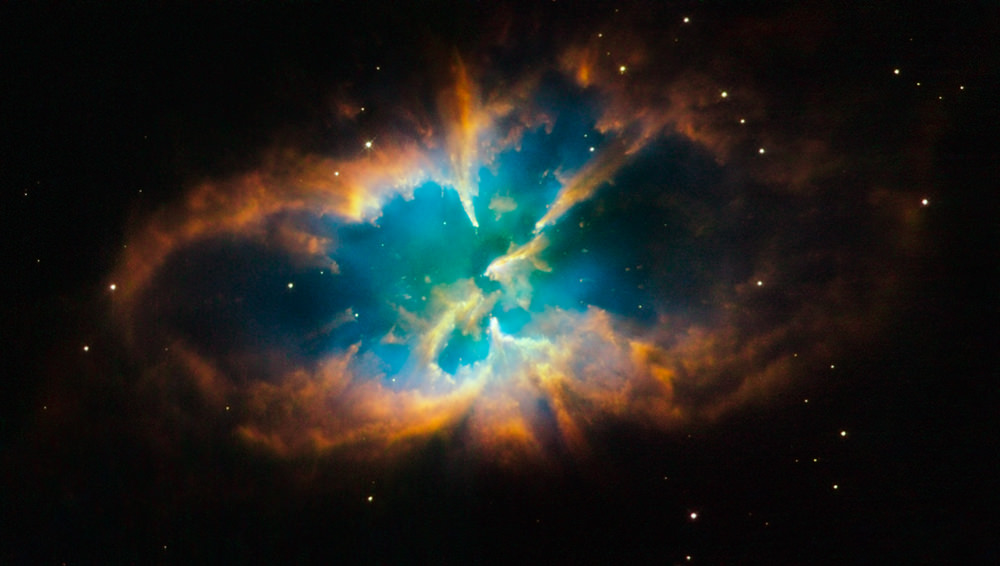
At the recent 237th meeting of the American Astronomical Society on Friday, Jan. 15th, scientists from the Rochester Institute of Technology (RIT) and the Green Bank Telescope presented new research into how planetary nebulae form their stunning shapes. Their work is centred on Hubble images of two well-known planetary nebulae: the Butterfly Nebula (NGC 6302) and the Jewel Bug Nebula (NGC 7027).
In 2019 and 2020, the Hubble used its Wide Field Camera 3 to image both nebulae in their full panchromatic glory. Emission line images from near-ultraviolet to near-infrared allowed astronomers to study the nebulae in detail. These panchromatic studies were the first of their kind. It’s all aimed at understanding the nebulae formation process and at testing models of binary-star-driven nebula shaping.
Joel Kastner is one of the researchers behind this work. Kastner is a professor at RIT in the Chester F. Carlson Center for Imaging Science and School of Physics and Astronomy. In a press release explaining the work, Kastner said, “We’re dissecting them. We’re able to see the effect of the dying central star in how it’s shedding and shredding its ejected material. We’re now seeing where material that the central star has tossed away is being dominated by ionized gas, where it’s dominated by cooler dust, and even how the hot gas is being ionized, whether by the star’s UV or by collisions caused by its present, fast winds.”

According to this research, the Butterfly nebula is very young, at about 2,000 years old. (It appeared at about the same time that the Roman army suffered its worst defeat.) One portion of the nebula is even younger. The so-called “wings”—the S-shaped iron-emission features—are not even 2,000 years old.
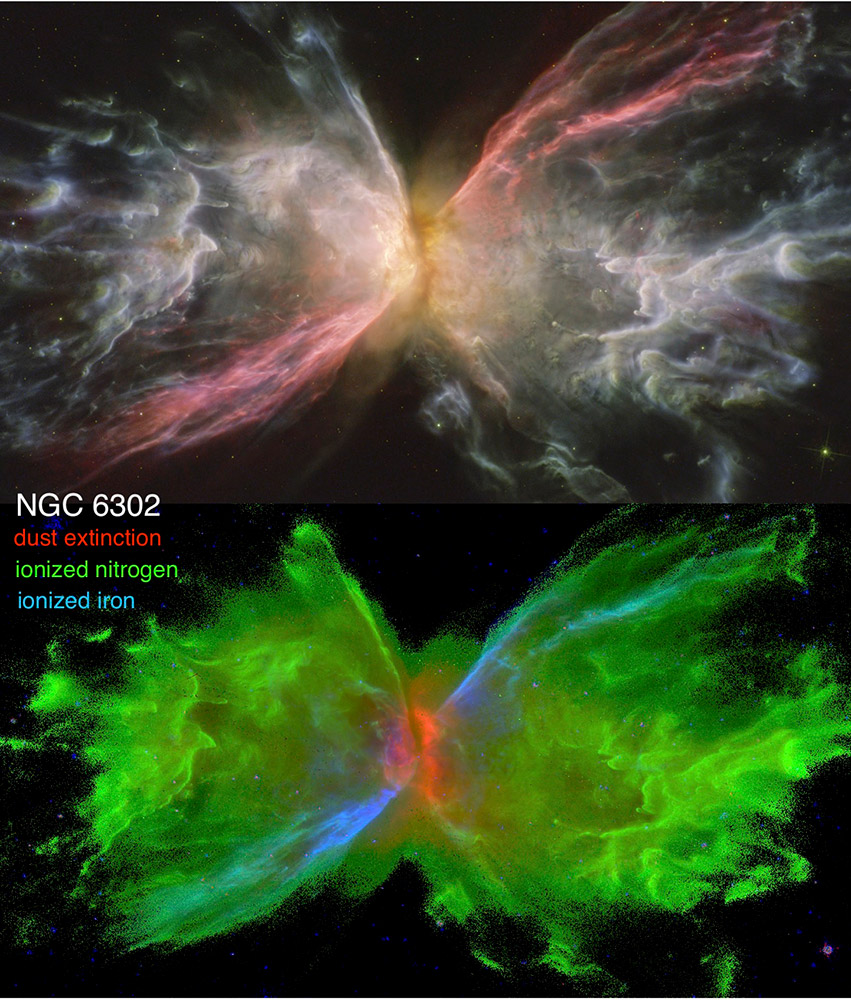
The research also revealed another surprise: what astronomers thought was the central star actually isn’t. That one is actually much closer to Earth and isn’t associated with the Butterfly. Identifying the actual star at the center of it all will require a powerful telescope like the James Webb Space Telescope, and Kastner hopes that the JWST will do just that.
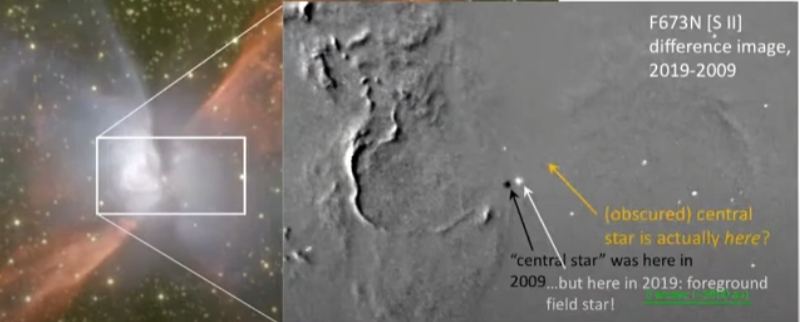
The other nebula in this study is the Jewel Bug nebula, or NGC 7207.
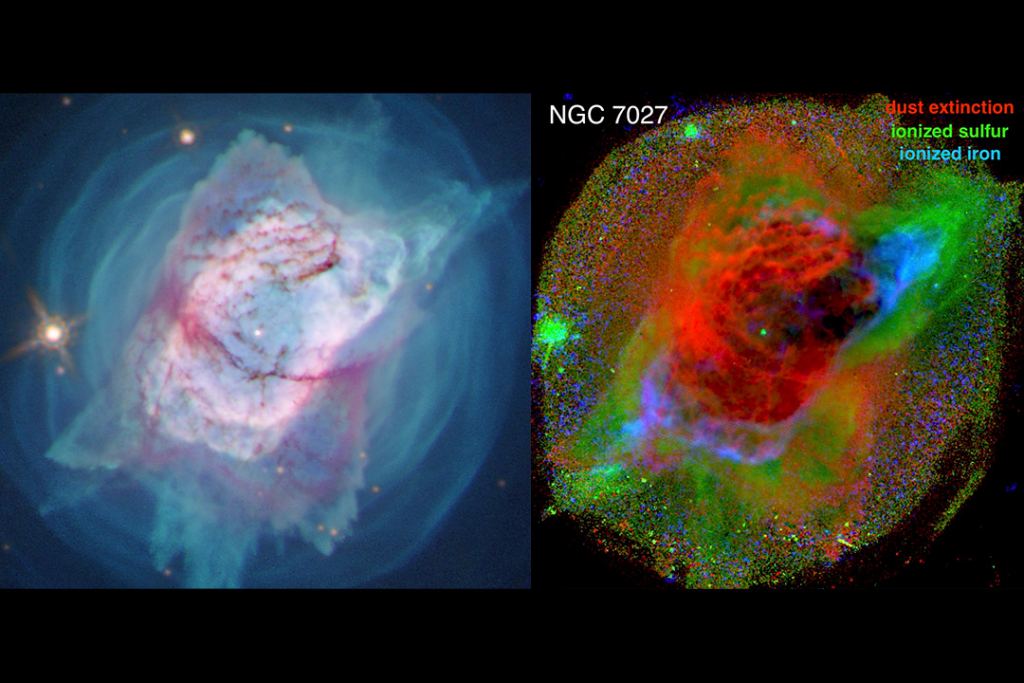
The team’s study of the Jewel Bug Nebula is based on 25 years of continuous monitoring that dates back to the Hubble Telescope’s early years. Paula Moraga Baez is one of the researchers involved in this study of planetary nebulae. Baez is a Ph.D. student in astrophysical sciences and technology. In the press release, Baez said that the Jewel Bug is “remarkable for its unusual juxtaposition of circularly symmetric, axisymmetric, and point-symmetric (bipolar) structures.” Baez explained that “The nebula also retains large masses of molecular gas and dust despite harbouring a hot central star and displaying high excitation states.”
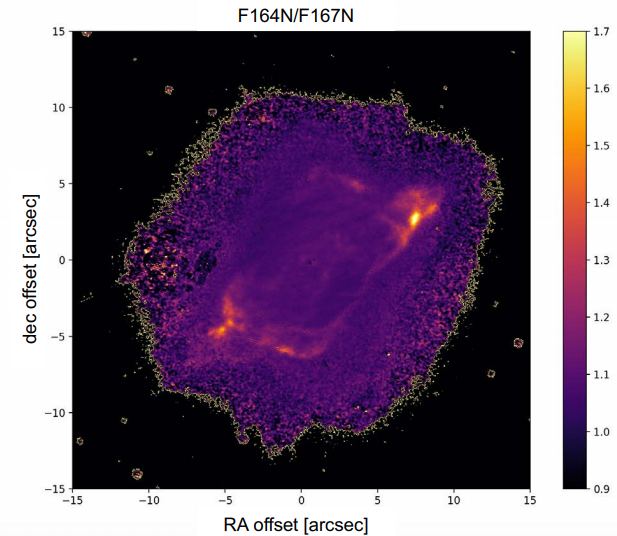
The Northern Extended Millimeter Array (NOEMA) Telescope also contributed to this research. Jesse Bublitz, a post-doctoral researcher at the Green Bank Observatory, analyzed NOEMA images of NGC 7207. He was able to identify molecular tracers that show how x-ray and ultraviolet light are still altering the nebula’s chemistry. The combination of images from multiple telescopes over multiple wavelengths shows how radiation from NGC 7207’s central star shapes different regions of the nebula.
“We’re very excited about these findings,” said Bublitz. “We had hoped to find structure that clearly showed CO+ and HCO+ spatially coincident or entirely in distinctive regions, which we did. This is the first map of NGC 7027, or any planetary nebula, in the molecule CO+, and only the second CO+ map of any astronomical source.”
![The RGB image on the right reveals the spatial separation of molecules CO+ (red) and HCO+ (blue), indicative of UV and X-ray processes, respectively. The much deeper optical image of [O III] (green) provides a juxtaposition of the ionized atomic structure and that of radio molecular observations. Image Credit: STScI, Alyssa Pagan; J. Bublitz (NRAO/GBO) et al.](https://www.universetoday.com/wp-content/uploads/2021/01/NGC_7027_molecularRGB_comparison.jpg)
Planetary nebulae are created fairly quickly in astronomical terms. As the red giant star sheds its layers, its stellar winds help shape those layers into the delicate shapes that define planetary nebulae. Then, as the star loses its mass, it becomes a planetary nebula nucleus (PNN). The wind from the PNN is faster than the wind from the red giant, and it impinges on the gas expelled from the red giant. Those interactions between stellar winds help create the wide variety of shapes on display in planetary nebulae.
Kastner says that their work is the “smoking gun” that proves that the two winds interact to create these shapes.
Theory also shows that the shape of the planetary nebulae can indicate an unseen binary companion star to the progenitor star. While this presentation didn’t present conclusive evidence of a companion, some of the images show that there are poorly-understood processes at play that could be related to the binary star scenario.
Bublitz presented an image showing three separate jets at work shaping the nebula. “So, altogether we have evidence for these periodic jets that are tearing through the otherwise fairly spherical or symmetric envelope of the planetary nebula NGC 7207, indicating that it has been going through very interesting processes in its still short lifetime.”
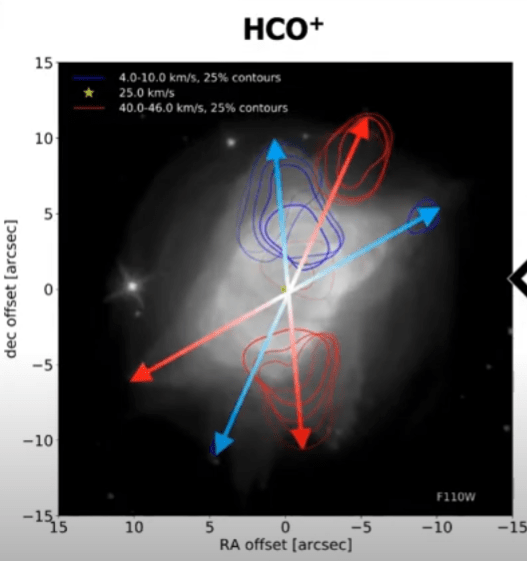
The nebulae in this study won’t last long. According to Kastner and his colleagues, they’re two of the youngest and most rapidly evolving planetary nebulae. Their lifespans are short, and as the gases that they’re made of continue to travel away from the progenitor star—which will eventually become a white dwarf—they’ll fade away and dissipate.
Those gases will eventually become part of the Interstellar Medium. In this way, planetary nebulae play an important role in shaping the next generation of stars. The gases from the nebulae have a higher metallicity, and the stars that form from those gases will have a higher metallicity. So will any planets that form around any of those stars. And rocky planets like Earth require metals to form.
Planetary nebulae are fascinating, even without all of this detailed knowledge to explain them. In astronomical terms, they’re just brief puffs of gas. In the blink of a technological civilization’s eye, they’re gone.
